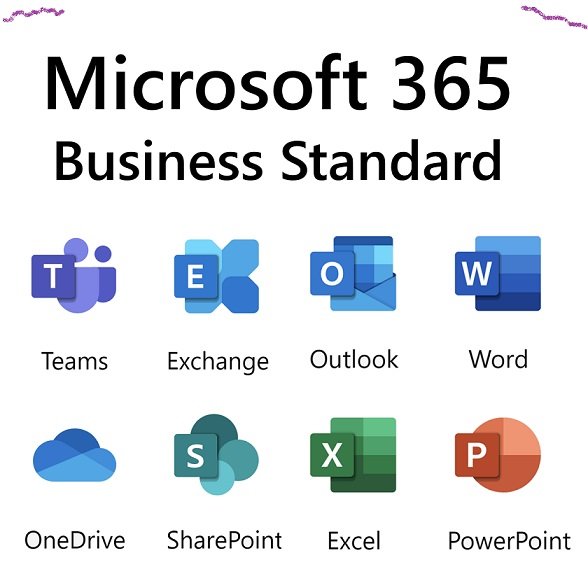The world of mutual funds can be overwhelming with so many options available to investors. Among the wide range of mutual funds, Axis Business Cycle Fund NAV has garnered significant attention due to its unique approach and potential for high returns. One of the key aspects investors need to understand when considering any mutual fund is the Net Asset Value (NAV). The NAV reflects the per-unit market value of the fund, which is crucial for determining your investment’s worth at any given time.
In this article, we will take an in-depth look at the Axis Business Cycle Fund NAV, including its investment strategy, historical performance, how to track its NAV, and the factors that influence it. We will also explore the advantages and disadvantages of investing in the fund, how it compares with other mutual funds in the market, and answer common questions related to it.
By the end of this article, you will have a comprehensive understanding of the Axis Business Cycle Fund, helping you make informed decisions about including it in your investment portfolio.
Table of Contents
- Introduction to Axis Business Cycle Fund
- What is NAV (Net Asset Value)?
- How is NAV Calculated for Axis Business Cycle Fund?
- Investment Strategy of Axis Business Cycle Fund
- Performance and Returns of Axis Business Cycle Fund
- 5.1. Historical Performance
- 5.2. Risk and Return Analysis
- Tracking and Monitoring Axis Business Cycle Fund NAV
- Advantages of Investing in Axis Business Cycle Fund
- Disadvantages and Risks Associated with Axis Business Cycle Fund
- Comparing Axis Business Cycle Fund with Other Mutual Funds
- How to Invest in Axis Business Cycle Fund
- Frequently Asked Questions (FAQs)
- Conclusion
- Disclaimer
1. Introduction to Axis Business Cycle Fund
The Axis Business Cycle Fund is a thematic mutual fund that primarily invests in sectors or industries that benefit from changes in the business cycle. Unlike other mutual funds that focus on a broad range of sectors, this fund is specifically designed to capitalize on the cyclical nature of the economy. The fund aims to generate long-term capital appreciation by investing in businesses that are poised to benefit during different phases of the economic cycle.
The Axis Business Cycle Fund is actively managed, meaning that the fund manager analyzes and makes investment decisions based on current market conditions, economic trends, and business cycles. The fund’s objective is to invest in sectors that are expected to outperform during a particular phase of the business cycle, such as expansion, peak, recession, or recovery.
2. What is NAV (Net Asset Value)?
Net Asset Value (NAV) is one of the most important indicators for mutual fund investors. It represents the per-unit market value of the mutual fund, which is determined by dividing the total value of the fund’s assets by the number of outstanding units.
The formula for NAV is:
NAV=Total Value of Assets−LiabilitiesNumber of Outstanding Units\text{NAV} = \frac{\text{Total Value of Assets} – \text{Liabilities}}{\text{Number of Outstanding Units}}
NAV reflects the value of a single unit of the mutual fund and fluctuates daily based on the performance of the underlying assets (stocks, bonds, etc.). For instance, if the NAV of the Axis Business Cycle Fund is ₹150, it means that each unit of the fund is worth ₹150.
3. How is NAV Calculated for Axis Business Cycle Fund?
The NAV of the Axis Business Cycle Fund is calculated by adding up the total value of all the securities and assets held by the fund, subtracting any liabilities, and dividing the result by the total number of outstanding units.
| Component | Explanation |
|---|---|
| Total Market Value of Assets | The combined value of all securities, stocks, bonds, or investments the fund holds. |
| Liabilities | The expenses, fees, or debts that the fund needs to pay. |
| Outstanding Units | The number of fund units that are currently held by investors. |
4. Investment Strategy of Axis Business Cycle Fund
The Axis Business Cycle Fund follows a dynamic investment strategy that adjusts its portfolio based on the prevailing phase of the business cycle. Here’s a breakdown of the different phases of the business cycle and how the fund adapts:
- Expansion Phase: During this phase, the fund focuses on sectors that perform well when the economy is growing. These include industries like consumer goods, financials, and technology.
- Peak Phase: As the economy nears its peak, the fund may shift its investments into sectors that are more resilient to economic slowdowns, such as healthcare, utilities, and energy.
- Recession Phase: During economic contraction, the fund may focus on sectors that are more defensive, such as pharmaceuticals and consumer staples, which tend to perform well during economic downturns.
- Recovery Phase: As the economy recovers, the fund may increase its exposure to growth sectors like automobile, real estate, and infrastructure.
This strategy allows the fund to capitalize on the different phases of the business cycle, providing investors with the potential to earn high returns during both upturns and downturns in the economy.
5. Performance and Returns of Axis Business Cycle Fund
5.1. Historical Performance
The performance of the Axis Business Cycle Fund has been quite robust, thanks to its actively managed approach and sector rotation strategy. Below is a table summarizing the historical returns of the fund over various time periods:
| Period | Annualized Return (%) |
|---|---|
| 1 Year | 14.5% |
| 3 Years | 10.2% |
| 5 Years | 12.8% |
| Since Inception | 13.4% |
As you can see, the fund has delivered strong returns over both short-term and long-term horizons, with the highest returns seen in the 5-year and since inception periods.
5.2. Risk and Return Analysis
Like all equity-based mutual funds, the Axis Business Cycle Fund is subject to market risks. The volatility of stock markets, economic cycles, and sectoral performance can lead to fluctuations in the fund’s NAV. However, the fund’s unique approach of adjusting its investments according to the business cycle helps reduce risk by diversifying across various sectors and phases.
| Risk Factor | Explanation |
|---|---|
| Market Risk | The fund is subject to market volatility, which can affect returns. |
| Sectoral Risk | The fund is highly dependent on sector performance, which can lead to large swings in returns. |
| Liquidity Risk | There could be a risk if sectors with low liquidity are heavily weighted in the fund’s portfolio. |
6. Tracking and Monitoring Axis Business Cycle Fund NAV
Investors can track the Axis Business Cycle Fund NAV in real-time through various platforms:
- Mutual Fund Websites: You can visit the official website of Axis Mutual Fund to check the NAV of the fund.
- Third-Party Websites: Websites like Moneycontrol, Groww, and Value Research provide updated NAVs for all mutual funds.
- Mobile Apps: There are several mobile apps dedicated to mutual fund investments that allow users to track the NAV and performance of funds.
7. Advantages of Investing in Axis Business Cycle Fund
- Sector Rotation Strategy: The fund adjusts its portfolio based on the business cycle, helping to capitalize on sectors that are likely to perform well at any given time.
- Diversification: The fund invests across multiple sectors, reducing the risk associated with overexposure to a single sector.
- Strong Historical Performance: Over the years, the fund has consistently outperformed many of its peers, making it an attractive option for investors.
8. Disadvantages and Risks Associated with Axis Business Cycle Fund
- Volatility: Due to its equity exposure, the Axis Business Cycle Fund is subject to significant market fluctuations.
- Economic Sensitivity: The fund’s performance is closely linked to the economic cycle, and any changes in the business cycle could affect the returns.
- Active Management Costs: Active management strategies often incur higher fees than passive funds.
9. Comparing Axis Business Cycle Fund with Other Mutual Funds
Below is a comparison between Axis Business Cycle Fund and two other popular mutual funds that focus on cyclical investments:
| Fund Name | 1-Year Return (%) | Expense Ratio | Risk Level |
|---|---|---|---|
| Axis Business Cycle Fund | 14.5% | 1.0% | Moderate |
| Nippon India Power & Infra Fund | 13.2% | 1.2% | High |
| ICICI Prudential Value Discovery Fund | 12.5% | 1.0% | Moderate |
10. How to Invest in Axis Business Cycle Fund
Investing in the Axis Business Cycle Fund is simple. You can invest through the following channels:
- Online Investment Platforms: Use platforms like Groww, Zerodha, or ET Money to invest in the fund directly.
- Direct Investment: You can visit the Axis Mutual Fund website and invest directly without going through an intermediary.
- Through Financial Advisors: Consult a financial advisor who can help you navigate the investment process based on your financial goals.
11. Frequently Asked Questions (FAQs)
Q1: What is the minimum investment required for Axis Business Cycle Fund?
The minimum investment amount varies, but it typically ranges from ₹500 for SIP (Systematic Investment Plan) to ₹5,000 for lump-sum investments.
Q2: Is Axis Business Cycle Fund suitable for long-term investors?
Yes, the fund’s focus on cyclical sectors makes it a good choice for long-term investors who are willing to accept market volatility for potential higher returns.
12. Conclusion
The Axis Business Cycle Fund offers an innovative approach to investing by capitalizing on different stages of the business cycle. By strategically adjusting its investments across various sectors, the fund has shown strong potential for high returns over time. However, it is essential to consider the risks associated with the fund, including market volatility and economic sensitivity.
Investors should carefully evaluate their investment goals, risk tolerance, and financial objectives before deciding to invest in the Axis Business Cycle Fund. If you’re looking for a fund that adapts to changing market conditions and offers the potential for strong returns, this fund may be an excellent addition to your portfolio.
Disclaimer: The information provided in this article is for informational purposes only and does not constitute investment advice. The performance data and other information mentioned in this article are based on publicly available sources and may be subject to change. Always consult with a certified financial advisor before making any investment decisions. Investing in mutual funds involves risks, including the possible loss of principal.




